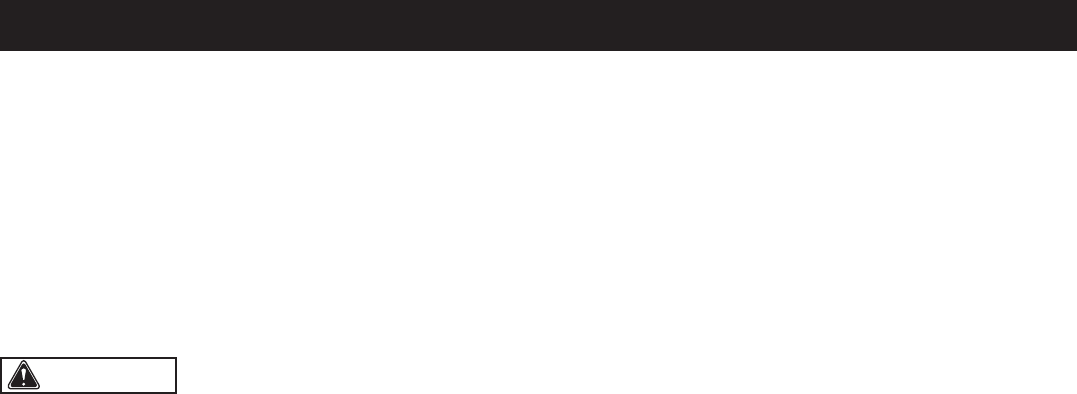Use And Care Manual

Page 25
WARNING: To reduce the risk of injury, make sure the chuck key is removed from the chuck before starting any
drilling operation.
OPERATION
DRILLING METAL
• Use metal-piercing twist drill bits.
• It is always necessary to lubricate the tip of the drill with oil to prevent overheating the drill bit.
• All metal workpieces should be clamped down securely. Any tilting, twisting, or shifting causes a rough drill hole and
increases the potential of drill bit breakage.
• Never hold a metal with your bare hands. The cutting edge of the drill bit may seize the workpiece and throw it, causing
serious injury. The drill bit will break if the metal piece suddently hits the column.
• If the metal is at, clamp a piece of wood under it to prevent turning. If it cannot be laid at on the table, then it should
be blocked and clamped.
DRILLING WOOD
• Brad point bits are preferred. Metal piercing twist bits may be used on wood.
• Do not use auger bits. They turn so rapidly that they lift the workpiece off the table and whirl it around.
• Always protect the drill bit by positioning the table so the drill bit will enter the centre hole when drilling
through the workpiece.
• To prevent splintering, feed slowly when the bit is about to cut enough to the backside of the workpiece.
• To reduce splintering and protect the point of the bit, use scrap wood as a backing or a base block under the workpiece.
FEEDING THE BIT
• Pull down on the feed handles with only enough force to allow the drill bit to cut.
• Feeding too rapidly might stall the motor, cause the belt to slip, damage the workpiece, or break the drill bit.
• Feeding too slowly will cause the drill bit to heat up and burn the workpiece.










